The sharks of the genus Alopias, within the family Alopiidae, are among the oddest and most recognizable sharks. Commonly known as the thresher sharks there are 3 extant species: the pelagic, common, and bigeye thresher. Their exceptionally long tail has long been the stuff of myth and speculation. It was once established maritime lore that thresher sharks would team up with swordfish to attack whales. The thresher using its tail to whip the whale, the swordfish using its bill to impale it, and together they would both feed on it. Other alleged uses for the tail include whipping seabirds and in one story, decapitating a fisherman. We now know that it is used to whip and stun its primary prey, schooling fishes and squids. Although the actual use of the thresher’s tail might be less exciting than the fanciful tales of old, it is still an interesting bit of behavior, unlike anything else seen in other shark species.
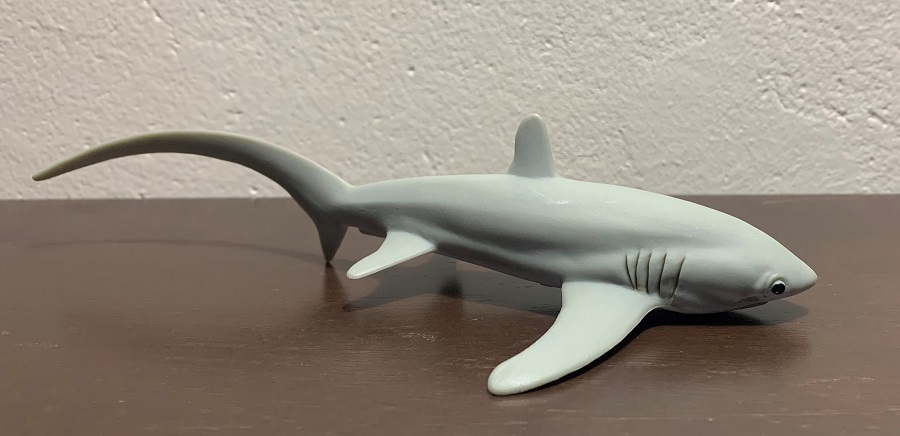
Safari markets this toy as a thresher shark, and on their website only indicates what genus it is. Since there are 3 thresher shark species the first order of the day it to identify this one at the species level. The bigeye thresher (A. superciliosus) has distinctive eyes, large and taller than they are wide, so it can be ruled out here, as this toy has smaller rounded eyes.
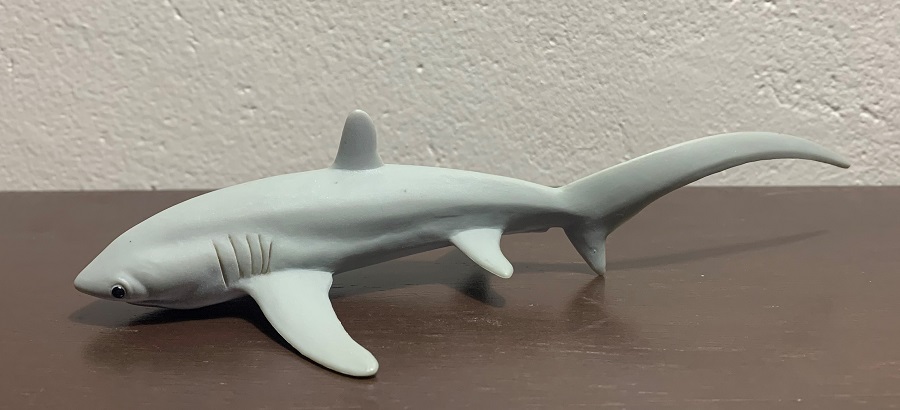
On the basis of color alone, the gray dorsal coloration and white underside of the toy matches it closer to the common (A. vulpinus) than to the typically blue colored pelagic thresher (A. pelegicus). But if this is intended to be a common thresher then the white coloration on the underside should extend over the pectoral and pelvic fin and it does not. So, the colors match the common, and their distribution more matches the pelagic. I should note that upon death the pelagic thresher’s blue color fades to gray, so maybe this toy is of a dead specimen.
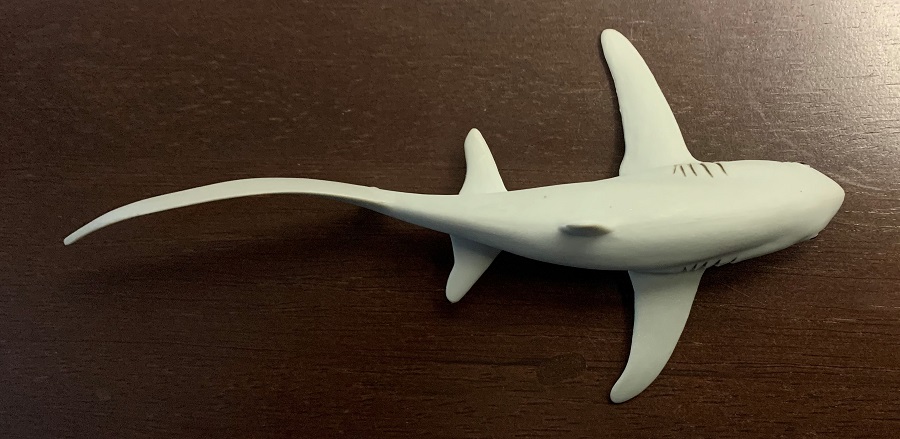
Anatomically the proportions match more closely to the pelagic than common thresher. The centralized position of the first dorsal fin between the pectoral and anal fin suggests that this is a pelagic thresher, as the dorsal would be closer to the pelvic fins in a common. The dorsal fin is also short, shorter than it should be in the common but similar to the pelagic. The pectoral fins are broad at the tips, in keeping with the pelagic thresher. The snout, while short, is longer than it would be in the common, and the eyes, while small, appear larger than they should in a common thresher. All that said, from above the head looks overall wider than it should be in a pelagic thresher, and more similar to the common. That last point is not enough to sway me, and so I’m identifying this one as a pelagic thresher.
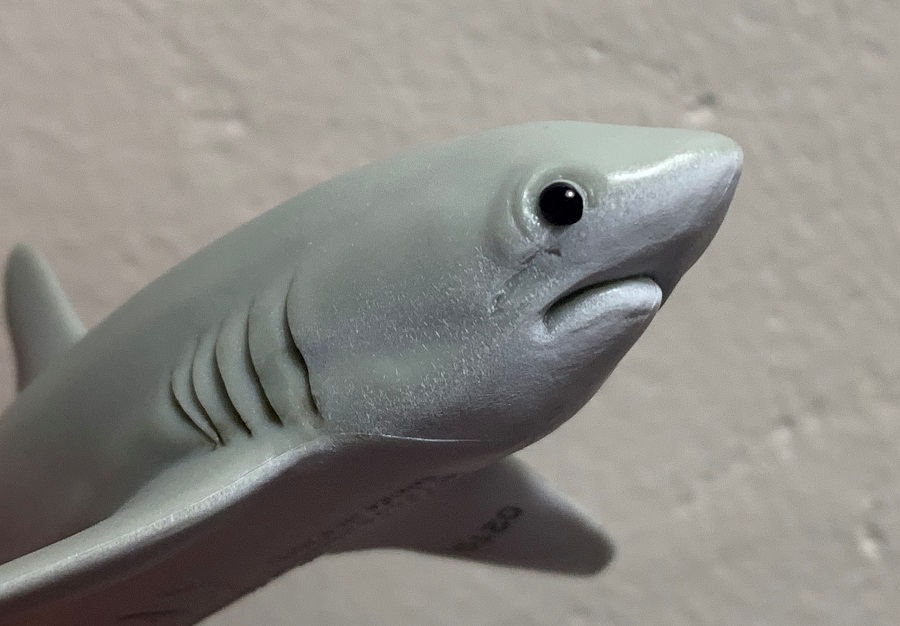
Identifying similar species can be difficult by itself, let alone a toy of one. Although a lovely toy at the surface level it suffers from a number of anatomical errors. The toy has the correct number of five gill slits but they’re a bit too long here, being shorter in the actual shark. A small anal fin is present but the second dorsal fin, which would be quite small in the actual shark, is not sculpted at all. Notches should be present at the caudal fin origin but are omitted. Also absent are the nostrils, a free rear tip on the dorsal fin, and the posterior tip of the upper caudal fin. If more attention was paid towards properly reconstructing the shark, we wouldn’t have any issues with its identity.
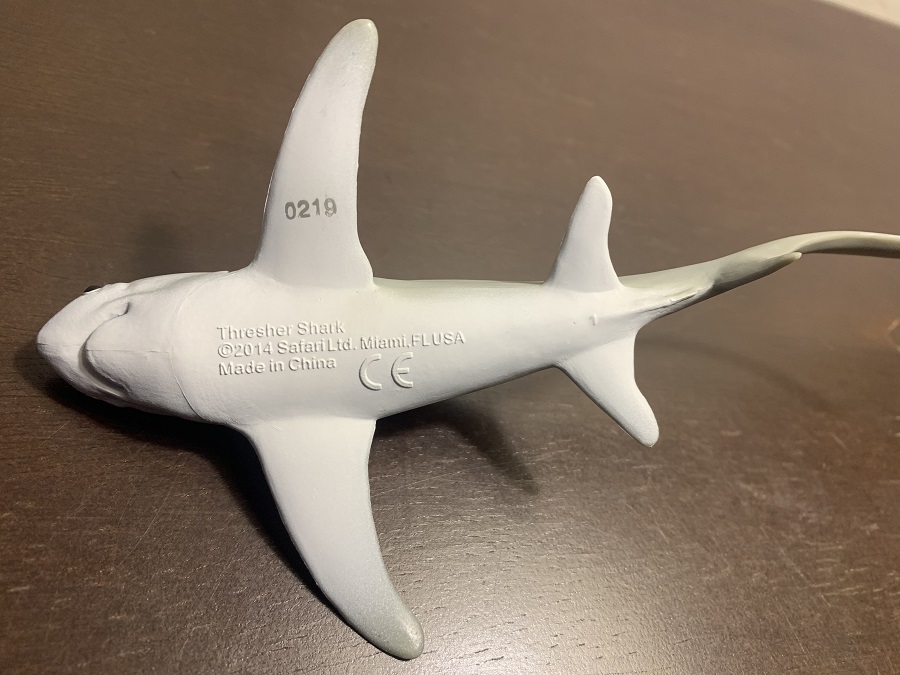
If this toy is indeed a pelagic thresher than that would put it at 1/17 in scale. The toy itself measures 6.75” (17 cm) while the pelagic thresher, the smallest of the 3 Alopias species, averages 10’ (3 meters). The toy could also fit into the 1/20 scale range as the pelagic thresher can reach lengths of 12.5’ (3.8 meters).
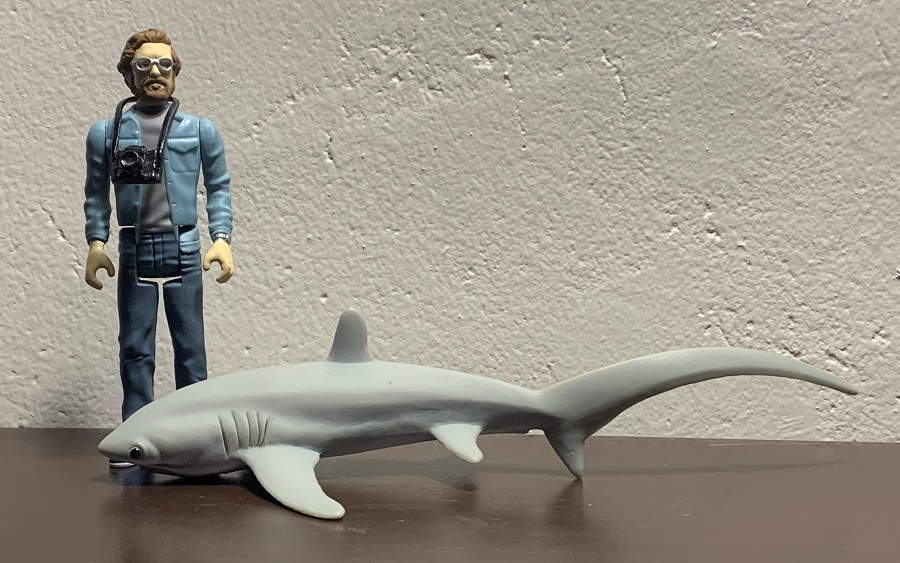
By and large the model succeeds, being very clearly a thresher shark and over all well made, but I wish more attention were paid to the more minor details, or lack thereof. Without any real competition, it’s the best thresher shark currently available, but upon closer scrutiny the list of minor errors start to add up which prevent it from being the exceptional model it could have been.
Disclaimer: links to Ebay and Amazon on the AnimalToyBlog are affiliate links, so we make a small commission if you use them. Thanks for supporting us!




I have this figure and I like it. I also agree it most-likely represents the pelagic thresher.
thank you for the wonderfully detailed review.